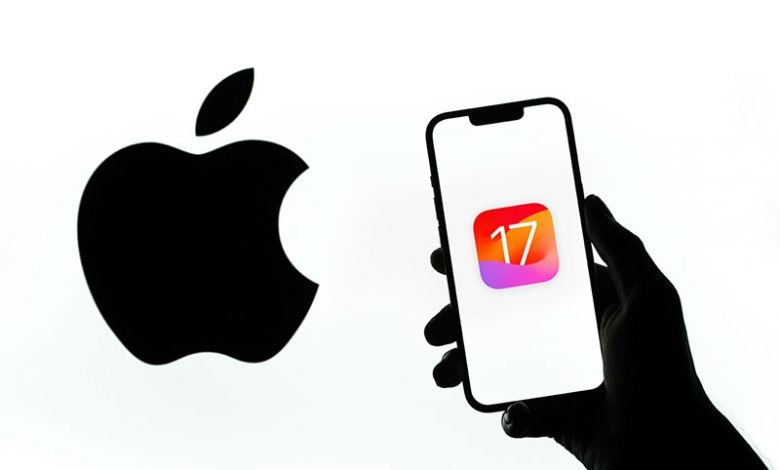
Table of Contents
Introduction to Standby on iPhone iOS 17
The newly introduced Standby feature in iOS 17 enables iPhone users to transform their devices into smart displays. This is done by turning the mobile phone into an interactive info board capable of showcasing any type of content, from digital clocks to music playback controls. Notably, this feature is best optimized with the iPhone 14 Pro's always-on display, yet is compatible with any iPhone model starting from iPhone 12. The always-on-display feature, however, garnered mixed reactions from consumers when it was initially introduced.
Definition and use of Standby
The iPhone's Standby feature, one of the highlight offerings of the iOS 17, essentially functions as a smart table-top display. The Standby mode lets your phone act as a mini display that shows widgets, useful information, or even a digital clock when the phone is not in use. Besides acting as a convenient info center, it is also handy for managing music and podcasts, as well as keeping an eye on food delivery status with real-time updates displayed full-screen.
Compatibility with iPhone 12 or newer
Standby is exclusive to iPhones running iOS 17, and while it delivers the best experience with the iPhone 14 Pro's always-on display, it is compatible with any iPhone equipped with MagSafe, starting from iPhone 12. So, users with the latest MagSafe-enabled iPhones are well poised to exploit the fullest potential of the Standby functionality.
Reaction to always-on display
The introduction of always-on display feature in the iPhone 14 Pro brought it shared views. Some users embraced it due to the convenience and innovation it reflected, allowing them to quickly glance at the phone for updates without necessarily unlocking it. On the other hand, it met resistance from certain users who initially found it confusing and distracting, notably due to a perception of constantly receiving notifications.
How to Put Your Phone in Standby Mode
Activating Standby mode on your iPhone allows you to use it as a smart display. Whether you want to see your photos, keep track of the weather, respond to notifications or manage music playback, Standby mode provides the tools. With a wealth of customizable options, Standby mode can be tuned to individual needs. Note that Standby mode is most effective on phones equipped with the always-on display, such as the iPhone 14 Pro, but it can run on any iPhone with iOS 17.
Requirements for Standby Mode
To use the Standby feature, you need an iPhone that runs iOS 17. The new Standby mode makes the most of the always-on display on the iPhone 14 Pro and iPhone 14 Pro Max, but the Standby feature is compatible with any iPhone equipped with MagSafe, starting from the iPhone 12. Standby can transform your phone into a smart display without needing too many adjustments.
Steps to start Standby Mode
Operating Standby mode is fairly straightforward. It will usually be enabled out of the box for iPhones running iOS 17, turning your device into a smart display whenever it's propped on a charging stand. The mode displays a variety of widgets including photos, clocks, weather, and much more information at your fingertips. Standby uses the full-screen for easily readable incoming notifications, Siri responses, and music playback controls.
Basics of widget customization
Users can customize what appears on their iPhone while in Standby mode. From changing clock faces and the display of chosen widgets to selecting specific photo albums for display, the screen in this mode can be personalized for individual needs and preferences. Further, you can also switch between Standby screens, add and remove Standby widgets, and customize the Standby clock screens.
Limitations of Standby mode
While Standby mode enhances the functionality of the iPhone as a smart display, it maintains some inherent limitations. Notably, to bring forth its full productivity, Standby mode leverages the always-on display, a feature primarily available in the newer iPhone 14 Pro and Pro Max. Consequently, while all iPhones running iOS 17 supports Standby mode, the older models could register a diminished experience by comparison.
Different Modes in Standby
The Standby feature in the iPhone offers various modes to provide users with a tailored information display. With user-friendly navigation and multiple options available, Standby allows the user to personalize their viewing experience with different modes such as Dual Widget view, Photos view, and Clock view.
Dual Widget view and its benefits
The default setting in Standby mode is the Dual Widget view, which displays two widgets simultaneously. This configuration allows users to interact with multiple widgets without the need for manual switching. Widgets can be cycled manually with a swipe, or the user can opt for the smart rotate feature, akin to the Smart Stack widget found on the Home Screen. This feature intelligently rotates widgets based on your usage patterns and preferences, adding another layer of personalization.
Description of Photo view
Photo view is another considerable feature of Standby mode, which converts your iPhone into a dynamic photo frame. This feature pulls directly from selected photos or the Featured Photos album on your device, creating an impressive slideshow display. The photo display can be automated or manually controlled by tapping the screen to progress. Whether you want to relive cherished memories or enjoy your favorite captures, Photo view brings your photos to life in an impressive format on your iPhone.
Use of Clock View and its styles
Standby mode also comprises a clock view, offering a variety of full-screen clocks that can be accessed by swiping through. The options include different fonts, a world map display for tracking various time zones, or even a mechanical watch face for those who prefer a classic aesthetic. Additionally, Standby mode can intelligently adapt to the room's lighting, transitioning to a red-tone display when the room darkens. This not only reduces the blue light emitted from the device for better sleep but also maintains the visibility of the time and other widgets.
Other Features of Standby
Aside from already mentioned functions like dual widget view, photos view, and clock view, Standby mode offers additional features that elevate the user experience. These include full-screen live activities, full-screen alarms and notifications, and an intriguing feature dubbed "MagSafe memory".
Full-screen Live Activities
Standby mode comes with support for Live Activities that appear full-screen, thereby making it easy for users to view them from afar. This feature adds a layer of convenience for users, by presenting needed information in an accessible and efficient manner. For instance, when you receive a call, the caller's contact card will populate the screen, giving you all the information you need at a glance.
Full-screen Alarms and Notifications
Another feature of Standby mode is its delivery of alarms and notifications in a full-screen format. This mode ensures that your notifications such as incoming calls or Live Voicemails, appear clearly and readable from across the room which is pretty handy.
Future of Standby with MagSafe usage
An interesting upcoming feature with Standby mode exhibits something Apple refers to as "MagSafe memory." Should you be using a MagSafe charger, Standby will remember the mode you were using in a particular location. For instance, if you use a MagSafe charging stand in the living room and have set Standby to photos mode there, it will recall this setting. Conversely, if you use a different charger in another room, say your bedroom, and set it to only display the clock, Standby would remember this distinction. This innovative feature not only enhances personalization but also sets an exciting precedence for potential future updates.




